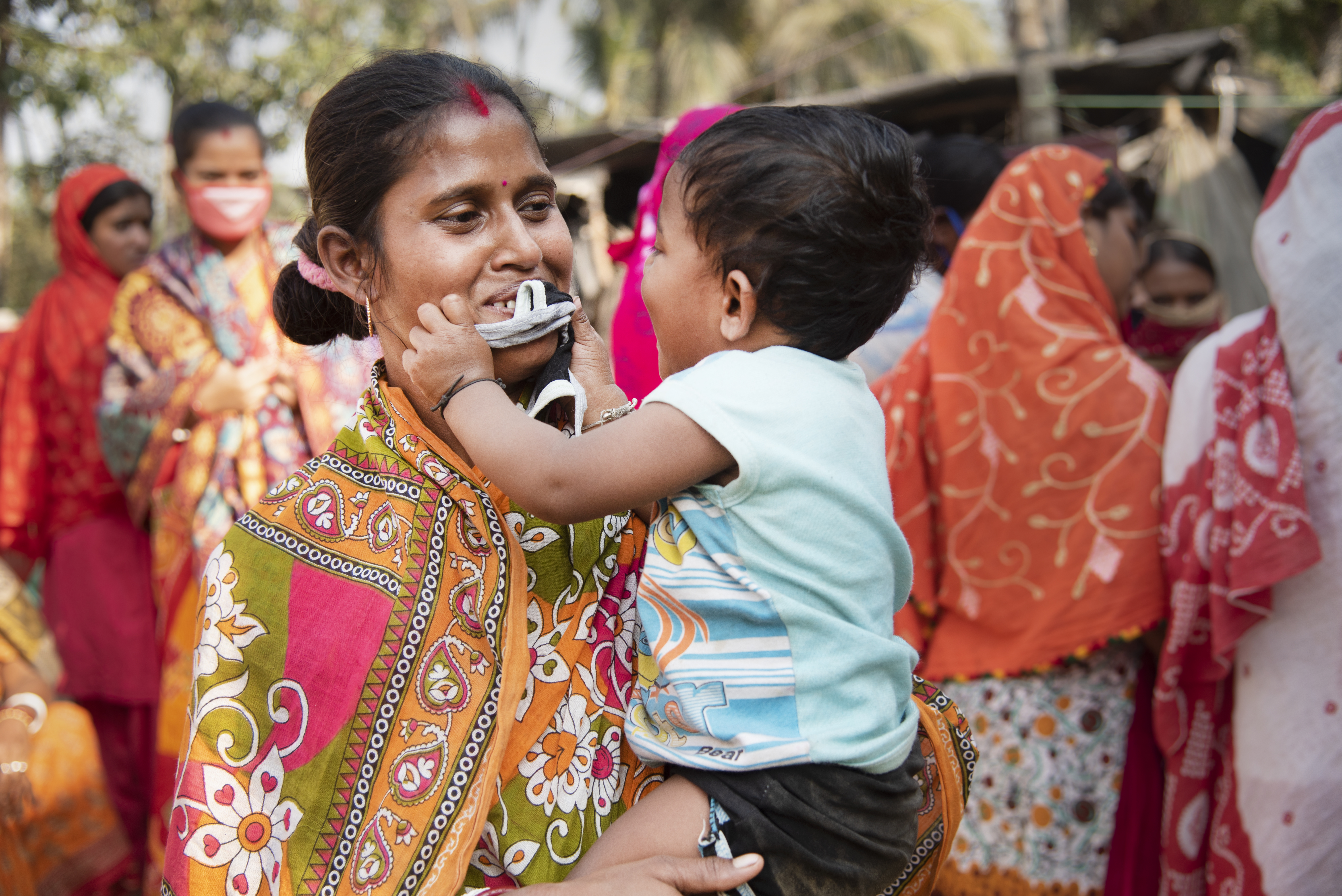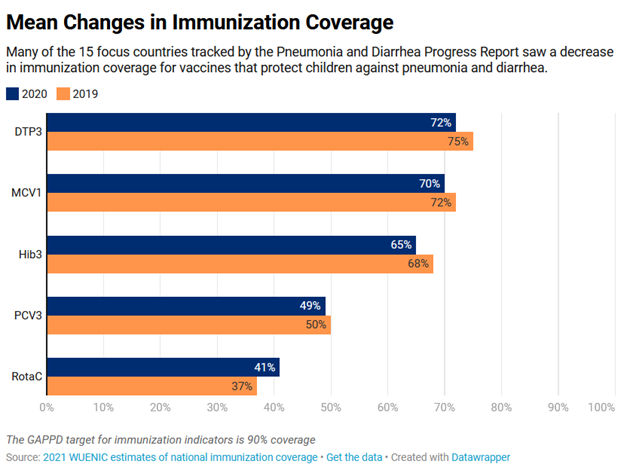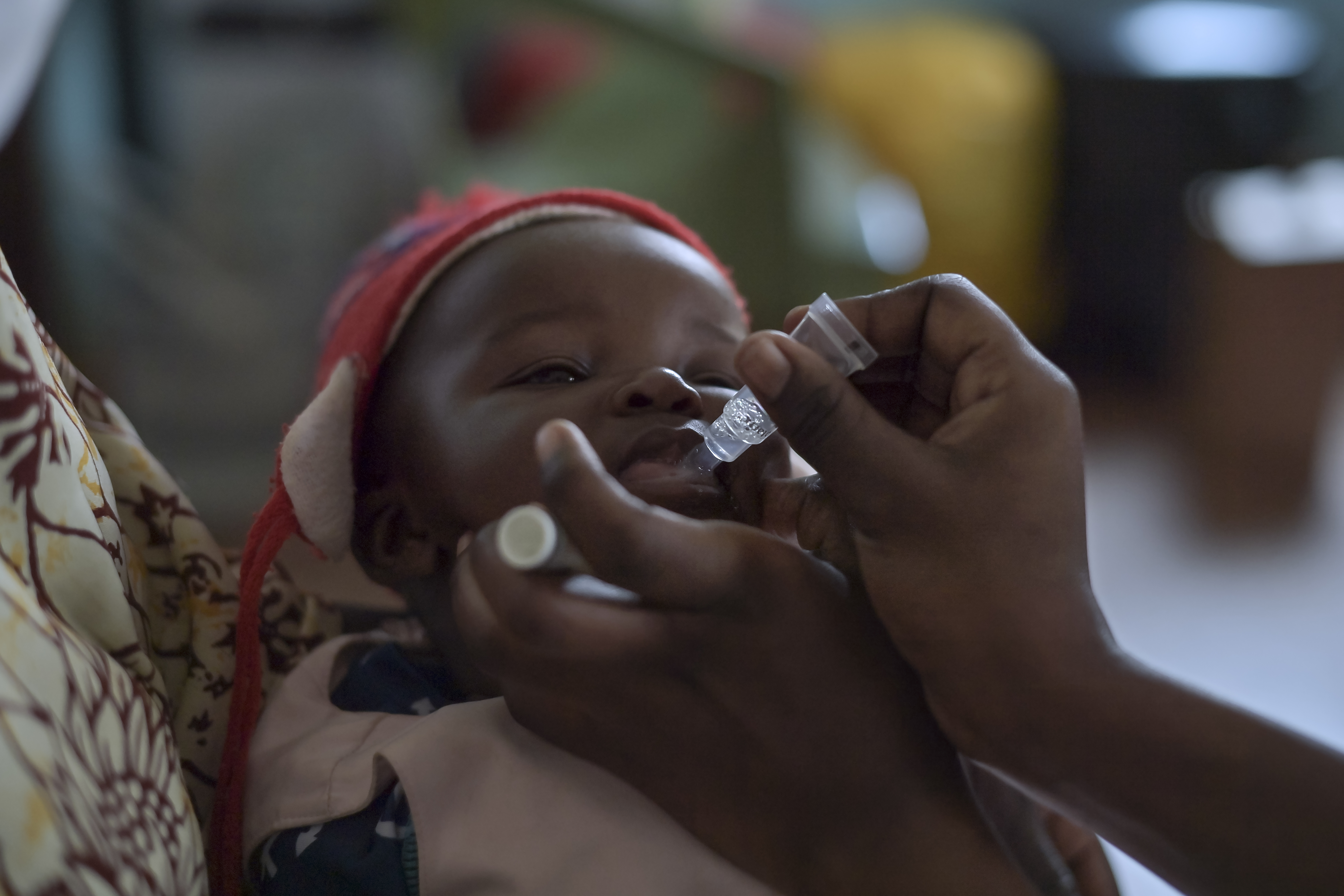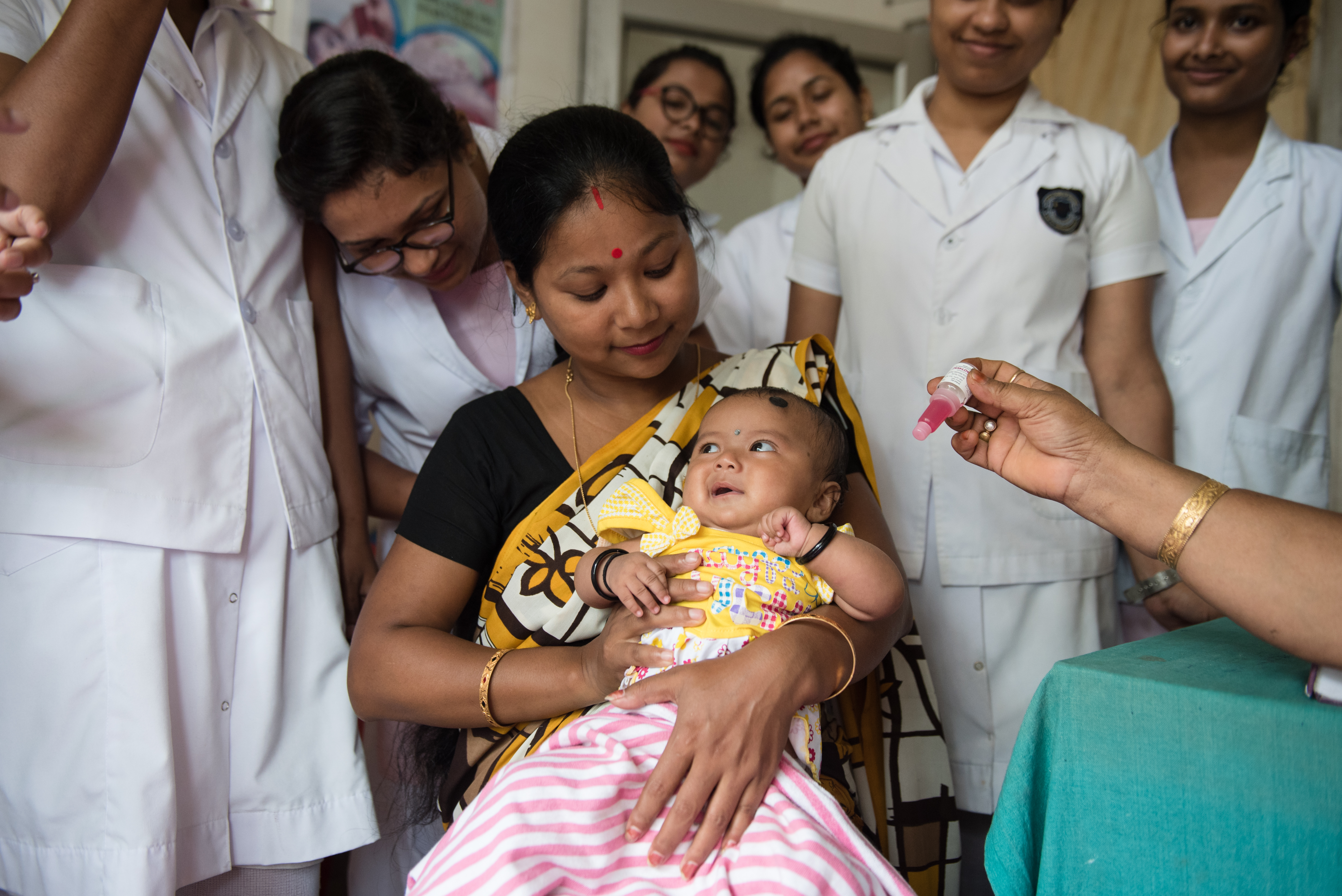Tracking progress in preventing child deaths from diarrhea and pneumonia
|

Over 800,000 children under 5 die from pneumonia each year—that’s one child every 39 seconds. Pneumonia continues to kill more children worldwide than any other infectious disease. Diarrheal diseases—the second leading infectious cause of death of children under 5—claim the lives of an additional 437,000 young children annually.
Between 1990 and 2019, the number of children who died before their 5th birthday fell by more than half. However, the direct and indirect effects of the COVID-19 pandemic are threatening to erase these decades of hard-won progress for global child health.
The fallout of the COVID-19 pandemic threatens to reverse decades of progress in protecting the world’s children from preventable, treatable illnesses like pneumonia and diarrhea.
The same sets of simple, proven tools—vaccines, breastfeeding, ORS/zinc, and appropriate antibiotics—are used to prevent and treat both of these forgotten epidemics. The Integrated Global Action Plan for the Prevention and Control of Pneumonia and Diarrhea (GAPPD) outlines these core interventions shown to successfully prevent, protect, and treat children who are at risk of serious illness or death due to pneumonia and diarrhea.
For over 10 years, the International Vaccine Access Center (IVAC) at the Johns Hopkins Bloomberg School of Public Health has published the annual Pneumonia & Diarrhea Progress Report. This report tracks data related to 10 key GAPPD indicators to monitor progress against childhood pneumonia and diarrhea in the 15 countries with the highest absolute burden of under 5 deaths. Around 70% of childhood pneumonia and diarrhea deaths are concentrated in just these countries.
Routine childhood vaccines are some of the best ways to save children’s lives from pneumonia and diarrhea. But according to the latest immunization coverage estimates from WHO and UNICEF, 23 million children missed out on basic vaccines through routine immunization services in 2020 – 3.7 million more than in 2019. In this year’s report we are already seeing how the COVID-19 pandemic could lead to a catastrophic backslide if we do not prioritize “forgotten” diseases like pneumonia and diarrhea. Across the report’s 15 focus countries, we found that coverage of immunizations that protect children against pneumonia and diarrhea fell by an average of 2 percentage points.

Of the 15 countries in the report, 6 experienced an overall decline in GAPPD scores and only 4 countries saw an improvement. Backsliding in the most vulnerable settings puts young children at greater risk of preventable infections and death.
However, despite the challenges of the COVID-19 pandemic there were also several bright spots that provide inspiration for continued progress towards global targets.
Pneumonia Vaccine Progress in India and Indonesia
- Both India and Indonesia continued to report progress in immunizations against pneumonia.
- India’s coverage of pneumococcal conjugate vaccine (PCV) increased by 6 percentage points (15% PCV coverage in 2019 expanded to 21% in 2020). In October 2021, a nationwide expansion of PCV under the Universal Immunization Programme was launched, marking the first time that PCV will be available for universal use across India.
- Indonesia received 1.6 million doses of PCV vaccine procured through the Gavi Pneumococcal Advanced Market Commitment. Despite challenges posed by COVID-19 response, the phased introduction of PCV vaccine led to an increase in PCV coverage from 3% to 4%.
Successful Rotavirus Vaccine Introductions
- India’s coverage of rotavirus vaccine increased by 29 percentage points (53% rotavirus coverage in 2019 expanded to 82% in 2020). In 2019, India completed the “100-days agenda”—an unprecedented national scale-up of rotavirus vaccine across the nation. This landmark vaccine expansion will help protect 26 million children born each year against life-threatening cases of diarrhea.
- The Democratic Republic of the Congo (DRC) introduced rotavirus vaccine in late 2019 and saw coverage soar from 0% in last year’s report to 33% this year. DRC is the first Gavi-supported country in Africa to introduce ROTASIIL.
These immunization achievements in the midst of a global pandemic highlight how progress is still possible. If we want to prevent further backsliding into more preventable child deaths from pneumonia and diarrhea, continued progress is not only possible, but imperative.
Learn more:
- Read the 2021 Pneumonia & Diarrhea Progress Report
- Watch the documentary Niruta: As Long as She Lives to learn about the impact of childhood pneumonia
- Explore a Child Health Week multimedia toolkit including short videos, social media, expert interviews, and more.











